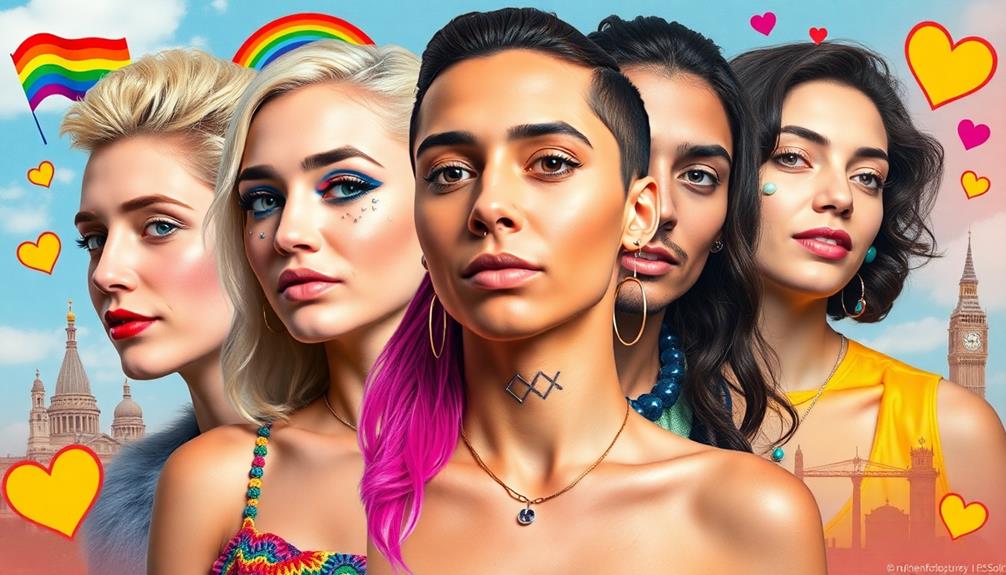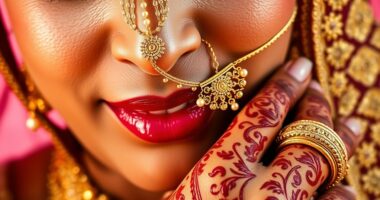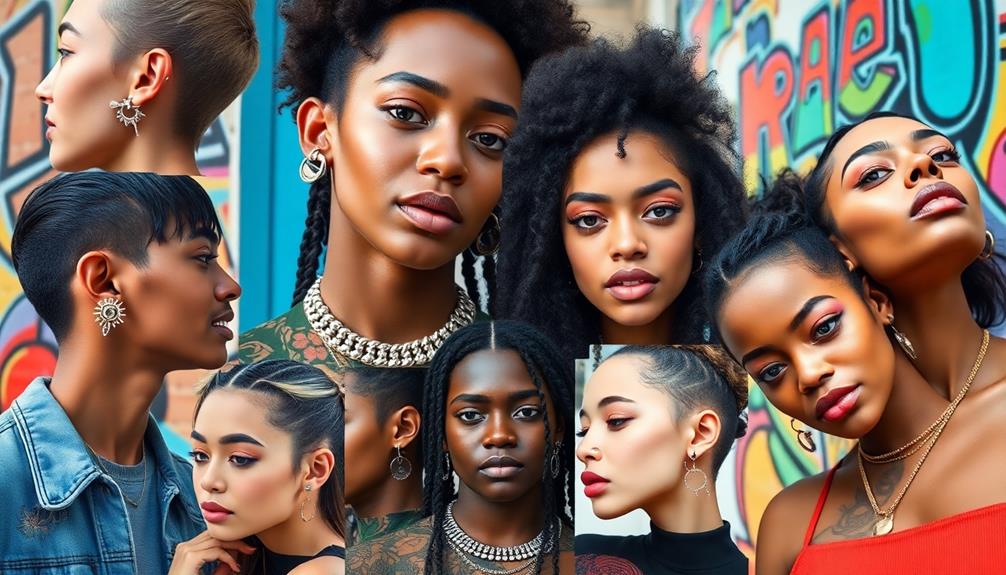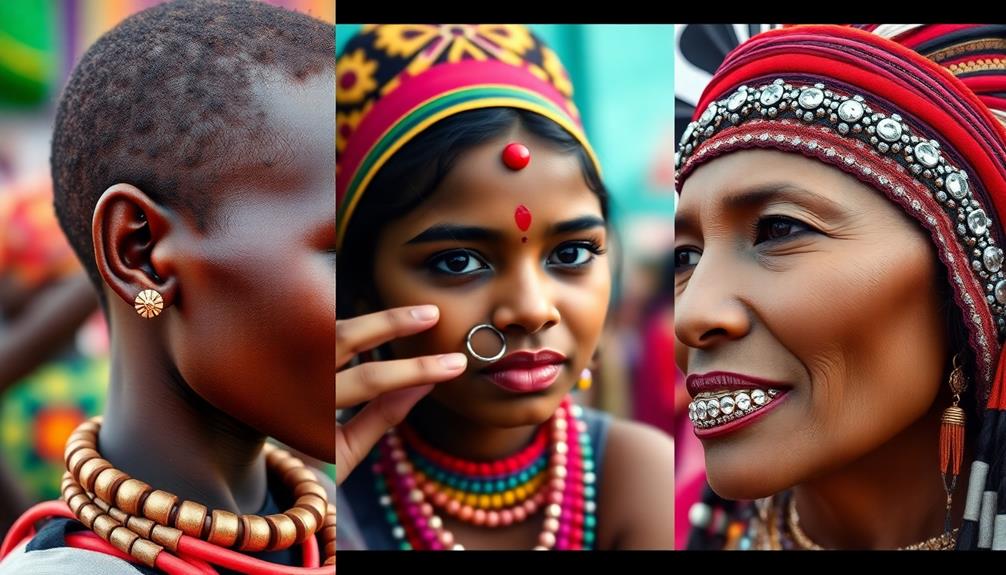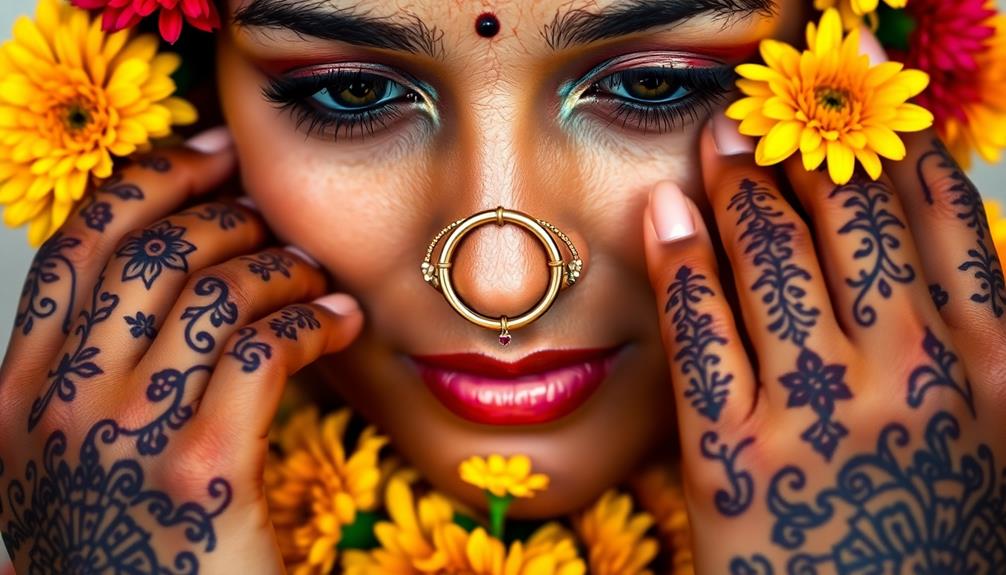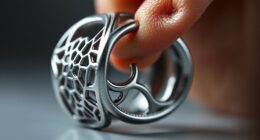Body piercings play a significant role in LGBTQ+ culture and history. They've historically marked identity, particularly since the Stonewall Uprising, when they became symbols of resistance. You might notice that the "gay ear" trend in the 1980s signified queer identity too. For many, piercings also serve as vital forms of gender affirmation, helping individuals connect with their identities. As a vibrant expression of self, these modifications create community and foster empowerment. Today, piercings continue to evolve, breaking traditional norms and shaping personal narratives. If you look closer, you'll discover the full story behind these transformative practices.
Key Takeaways
- Body piercings have historical roots in LGBTQ+ culture, marking identity and resistance since the Stonewall Uprising.
- Piercings serve as vital forms of gender affirmation for transgender individuals, enhancing body acceptance and alleviating dysphoria.
- The intersection of kink culture and body modifications highlights the role of piercings in personal expression and empowerment within queer communities.
- Stigmatization of pierced individuals often leads to discrimination in healthcare and employment, impacting mental health and access to services.
- Contemporary LGBTQ+ culture celebrates piercings as vibrant expressions of identity, fueled by inclusivity and body positivity movements.
Historical Significance of Piercings
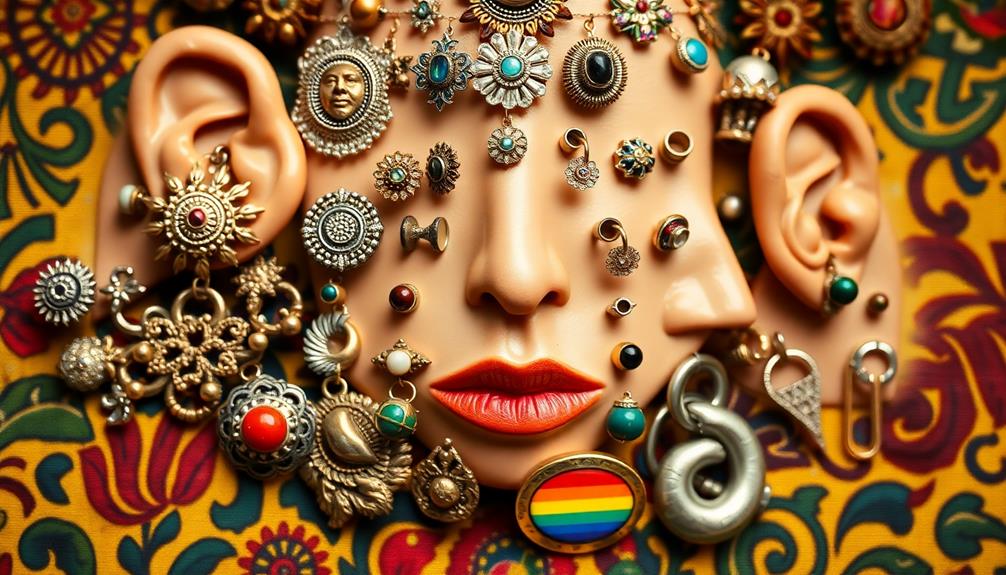
Although body piercings have ancient roots, their significance within LGBTQ+ culture has evolved dramatically over time. Historically, these body modifications served as markers of identity, particularly within queer, trans, and kink communities.
For you, understanding this historical significance reveals how piercings reflect broader societal changes and resistance to norms. The emergence of the "gay ear," where a left ear piercing discreetly signaled gay identity, showcases how piercings functioned as cultural codes and forms of self-expression.
Influential pioneers like Jim Ward in the 1970s established professional piercing studios that catered specifically to the queer community, raising the standards and safety of body piercing practices.
The Stonewall Uprising in 1969 further catalyzed the integration of body piercings into queer culture, connecting the practice with broader movements for LGBTQ+ rights and visibility.
Today, piercings have transformed from ancient traditions to contemporary expressions of identity. Their meanings vary across communities, often challenging gender binaries and societal expectations.
As you explore this rich history, you'll see how body piercings not only symbolize individuality but also embody the resilience and diversity of the LGBTQ+ community.
Gender Affirmation Through Piercings
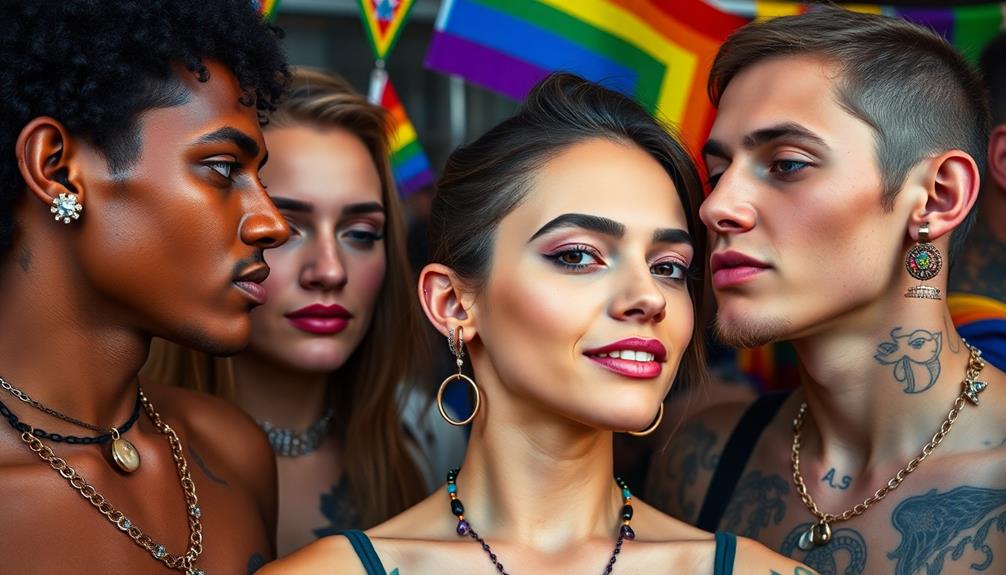
Body piercings play an essential role in gender affirmation for many individuals within the transgender community. For transgender people, piercings like nipple and clitoral hood piercings can alleviate dysphoria, promoting body acceptance and a stronger connection to their gender identity.
These body modifications offer a unique way to align one's physical appearance with their true self without the financial burden of surgeries. Transgender men, in particular, find that large gauge labia piercings serve as a physical reminder of male anatomy, providing an accessible alternative to surgical options.
The cost-effectiveness and temporary nature of piercings make them an attractive choice for those traversing their gender journey. Additionally, piercings can enhance body image and empower individuals, especially within the queer community.
Personal narratives often highlight how these transformative experiences affirm one's identity, reinforcing the significance of body modifications in self-discovery. By embracing piercings, you not only express your identity but also connect with a broader network of individuals who share similar journeys.
Through these acts of self-expression, you contribute to a culture that celebrates diversity and acceptance.
Kink Culture and Body Modifications
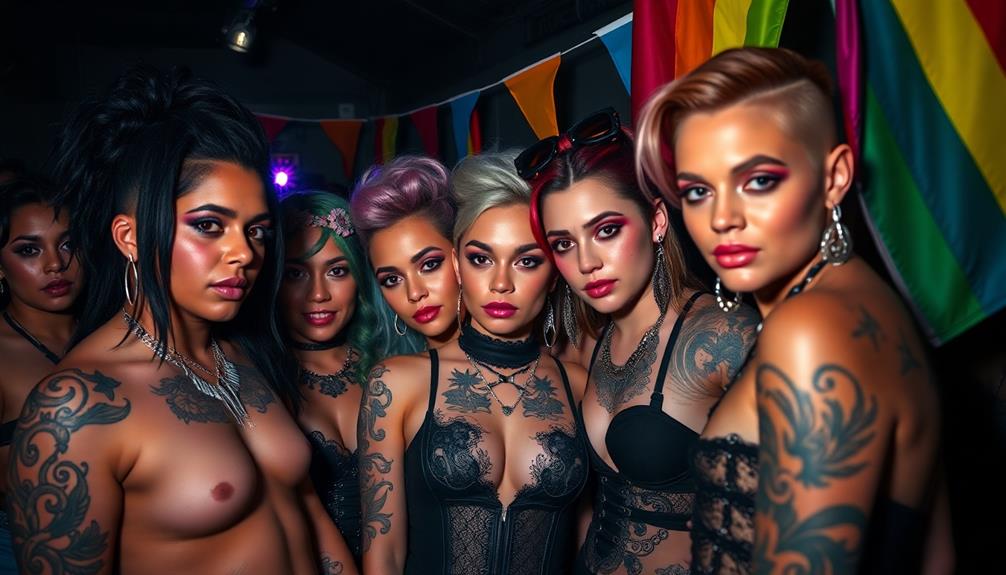
Piercings not only facilitate gender affirmation but also play a significant role in kink culture, where body modifications serve as powerful symbols of personal expression and empowerment. Within these communities, body piercings often reflect a deeper connection to identity and desire.
Here are three key aspects of how kink culture intertwines with body modifications:
- Aesthetic and Functional: In BDSM, play piercings enhance both the visual appeal and the functionality of scenes, allowing for a unique blend of beauty and purpose.
- Historical Context: The rise of piercing as a form of kink expression gained momentum in the 1970s and 1980s, closely linked to broader queer sexual liberation movements that championed self-ownership and exploration.
- Transformative Experiences: Suspension practices, where individuals are lifted by their piercings, illustrate the spiritual and psychological dimensions of body modification, often leading to profound meditative experiences.
Kink culture has long been intertwined with queer activism, with body piercings serving as visible markers of identity, consent, and community pride.
Embracing these modifications allows you to celebrate your body and engage with your identity in a deeply personal way.
Discrimination and Medical Bias
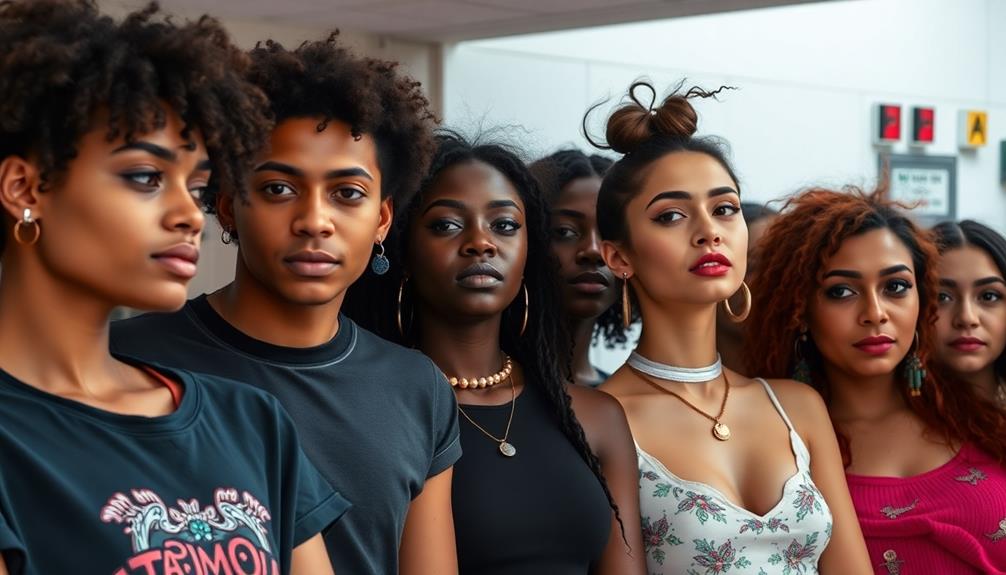
When you walk into a healthcare setting with visible body piercings, you might face assumptions that affect your access to care.
Medical professionals often prioritize removing piercings over treating your actual health needs, which can lead to a lower quality of care.
This stigmatization not only impacts your treatment but also highlights the broader discrimination faced by individuals in the LGBTQ+ community.
Healthcare Access Challenges
In recent years, healthcare access challenges have become increasingly evident, particularly for those with visible body modifications like piercings. If you're part of the LGBTQ+ community and express your queer identity through body piercings, you might face discrimination in healthcare settings. This bias can hinder your access to necessary medical treatment, as some professionals may prioritize removing your piercings over addressing your health concerns.
Consider these key issues:
- Discrimination: Medical professionals may harbor biases against body modifications, leading to inadequate care.
- Stigma: Visible piercings can result in negative assumptions about your professionalism, affecting access to vital services.
- Marginalization: Individuals from marginalized groups often experience heightened discrimination, further complicating their healthcare access.
These challenges highlight a critical need for inclusive healthcare practices that respect individual choices and identities.
It's crucial to push for awareness and understanding within the medical community. Your body piercings are part of your identity, and everyone deserves equitable healthcare access, free from discrimination and bias.
Addressing these issues can lead to a more supportive environment for all patients, especially those with unique expressions of identity.
Bias in Treatment
Experiencing bias in treatment can greatly affect your healthcare journey, especially if you have visible body piercings. Many healthcare professionals may prioritize removing your piercings over addressing your immediate health concerns, leading to feelings of frustration and alienation.
Studies show that patients with body modifications, including piercings, often face discrimination, resulting in inadequate treatment and a perceived lack of professionalism from providers. This stigma can create negative assumptions about your lifestyle, making it even harder to access essential health services.
As a queer person, you might encounter compounded discrimination due to both your identity and your visible piercings, which can greatly impact your health outcomes and overall well-being.
These medical biases may leave you feeling mistrustful of healthcare systems, discouraging you from seeking necessary assistance when you need it most. This cycle of bias not only affects your healthcare access but also your mental and emotional health.
It's vital to recognize these challenges, advocate for yourself, and seek out inclusive healthcare providers who respect your choices and individuality, ensuring you receive the care you deserve.
Stigmatization of Pierced Individuals
Many individuals with visible piercings face significant stigmatization in both queer and mainstream cultures, often deemed as deviant or non-conforming. This discrimination impacts various aspects of their lives, including healthcare and employment opportunities.
The biases you encounter can manifest in several ways:
- Healthcare Discrimination: Medical professionals might prioritize removing piercings over treating urgent health issues, leading to inadequate care.
- Employment Bias: People with piercings often face negative assumptions about their professionalism and employability, limiting access to essential services and job opportunities.
- Community Exclusion: The intersection of stigma against body modifications and queer identities compounds feelings of marginalization within both LGBTQ+ and broader communities.
These experiences can create a cycle of exclusion, where your gender expression and body modifications make you vulnerable to discrimination.
The negative perceptions surrounding piercings not only affect your mental health but also reinforce societal norms that dictate what's deemed acceptable.
Personal Experiences and Community
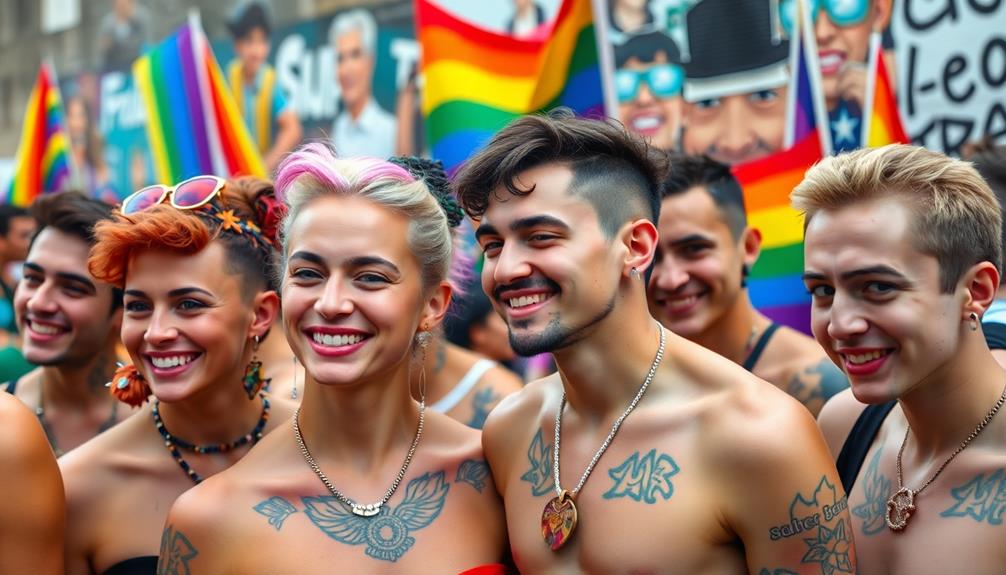
Body piercings often serve as powerful symbols of identity within the LGBTQ+ community, reflecting personal journeys of self-discovery and acceptance. For many queer folks, body piercing represents a key form of personal expression that affirms their gender and sexual identities. When you choose to get a piercing, it can feel transformative, helping you connect with your authentic self and marking milestones in your understanding of your identity.
The experience of getting pierced isn't just individual; it fosters community support and shared narratives among queer individuals. As you and others in the community gather to celebrate these body modifications, you create strong bonds through shared experiences. These connections reinforce a sense of belonging, emphasizing the importance of acceptance and understanding within marginalized groups.
Moreover, the act of piercing can symbolize collective identity, showcasing the diverse ways queer folks express themselves. Whether it's a simple stud or a bold statement piece, each piercing tells a story of empowerment.
Evolution of Piercing Practices
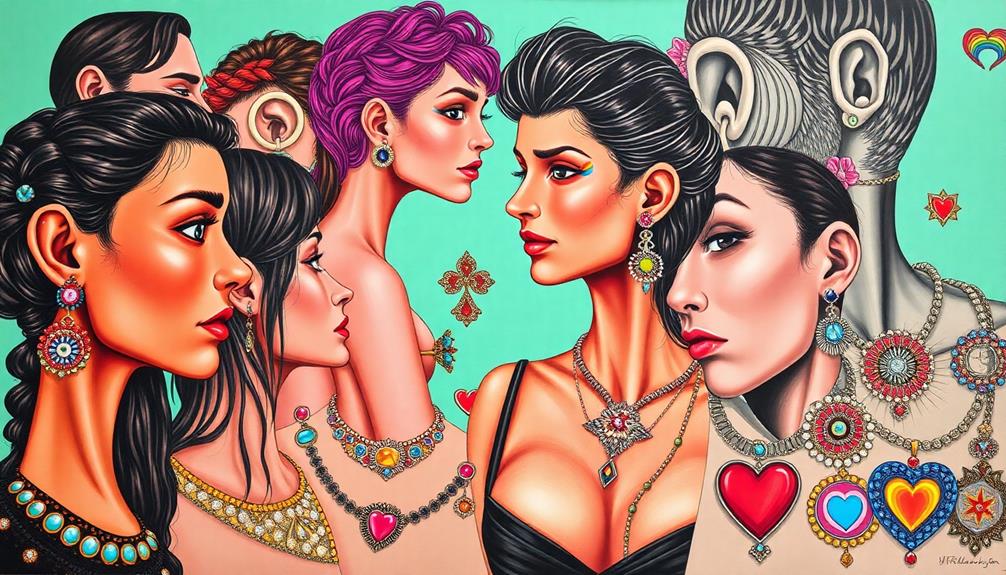
You might notice how body piercing practices evolved greatly since the 1970s, driven by cultural movements like punk and the gay community's quest for self-expression.
These changes reflect broader societal shifts, as piercings shifted from rebellious statements to accepted forms of identity.
Understanding this evolution helps you appreciate how piercings have become intertwined with LGBTQ+ culture and personal empowerment.
Historical Influences on Piercings
Throughout the evolution of piercing practices, the LGBTQ+ community has embraced body art as a powerful form of self-expression and identity. Modern body piercing gained prominence in the 1970s, particularly within the gay community in cities like Los Angeles and San Francisco. Influenced by the punk movement, this era marked a rebellion against societal norms.
Notable historical influences include:
- The Stonewall Uprising: This pivotal event in 1969 catalyzed the adoption of body piercings as symbols of identity and resistance, intertwining with the LGBTQ+ rights movement.
- The Emergence of the "Gay Ear": In the 1980s, specific ear piercings became discreet signals for sexual orientation, showcasing how piercing practices evolved as coded forms of communication within the queer body.
- Key Figures: Jim Ward, who opened the Gauntlet in 1978, set professional standards that benefited both queer and kink cultures, reinforcing safety in body piercing.
These practices challenged the traditional gender binary, allowing individuals to express their identities boldly and authentically. This solidified body piercings as significant markers of cultural identity within LGBTQ+ spaces.
Cultural Shifts in Practice
As the LGBTQ+ community embraced body piercings, cultural shifts began to redefine their significance and practices. In the 1970s, particularly through the punk movement, body piercing became a rebellion against societal norms, allowing individuals to express their true selves.
The Stonewall Uprising of 1969 catalyzed this transformation, leading to the first Pride celebrations in 1970 and solidifying body piercings as powerful symbols of queer identity and resistance.
Pioneers like Jim Ward established piercing studios, elevating technical standards and aesthetics, making body piercing more accepted in LGBTQ+ spaces. The emergence of the "gay ear" phenomenon in the 1980s showed how these practices served as discreet signals of sexual orientation, illustrating evolving cultural codes among queer communities.
As body piercing practices continued to evolve, they became crucial for affirming gender identity and expression. For gender nonconforming individuals, piercings served as essential tools for self-acceptance and personal empowerment.
Today, during Pride Month and beyond, body piercing remains a vibrant part of LGBTQ+ culture, reflecting the ongoing journey of self-discovery and celebration of diversity.
Pioneers in Piercing Culture
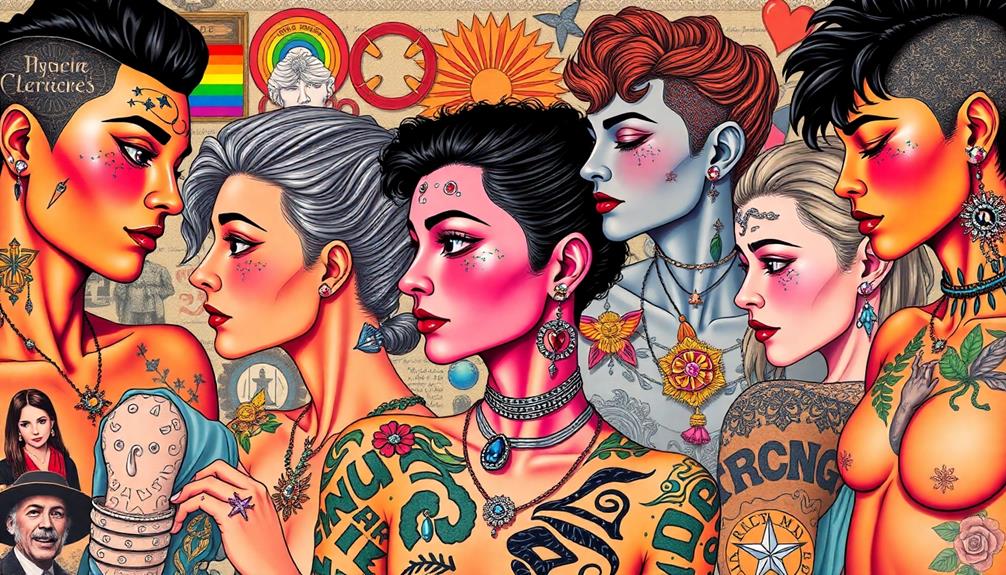
In the vibrant evolution of body piercing culture, several key figures emerged as pioneers, shaping its practices and aesthetics. Among them, Jim Ward established Gauntlet Piercing Studios in 1978, becoming a cornerstone of the piercing industry. His focus on professionalism and safety revolutionized how piercings were perceived, particularly within the queer and kink communities.
Here are three significant contributions from these pioneers:
- Technical Standards: Mr. Sebastian opened one of the first piercing studios in London during the 1970s, setting new technical standards for genital and nipple piercings that influenced future practitioners.
- Jewelry Design: Ward's collaboration with Doug Maloy advanced piercing techniques and jewelry design, creating more diverse and creative forms of expression within the piercing culture.
- Public Awareness: The publication of *Modern Primitives* in 1989 played an essential role in educating the public about body modifications, helping to destigmatize piercing practices.
These pioneers not only transformed body piercing into a respected art form but also laid the foundation for understanding and embracing body autonomy in the LGBTQ+ community.
Symbolism and Queer Identity
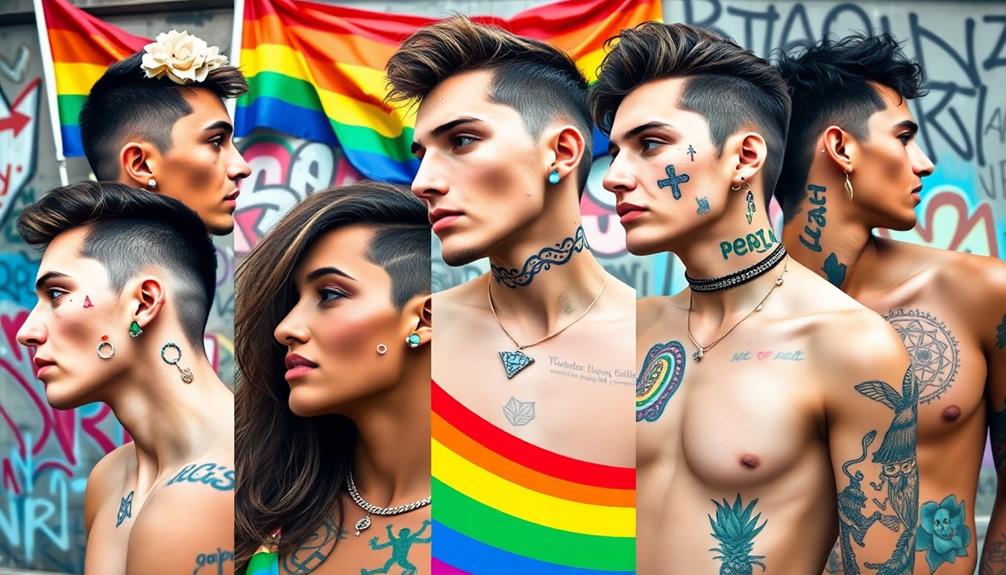
Body piercings often serve as powerful symbols of queer identity, allowing individuals to express their unique selves in ways that defy societal norms. For many in the LGBTQ+ community, modern piercing acts as a form of rebellion, challenging traditional gender binaries and expectations.
The introduction of the color purple for piercing fetish flagging created a nonverbal communication method, enabling you to convey your queer identity through body modifications.
Getting a piercing can represent a personal milestone in your journey of self-acceptance. It's a way to reclaim agency over your body, affirming who you are. Historically, specific piercings, like earrings on men, have been linked to sexual orientation, reflecting evolving societal codes and the rise of queer visibility.
Through piercings, you engage in a powerful act of self-expression that reinforces both personal and collective queer identity. Each piercing can symbolize transformation, reflecting your growth and individuality.
In a world that often seeks to categorize, body piercings empower you to embrace your uniqueness, making a statement that resonates within the broader gay community and beyond.
Contemporary Perspectives on Piercings
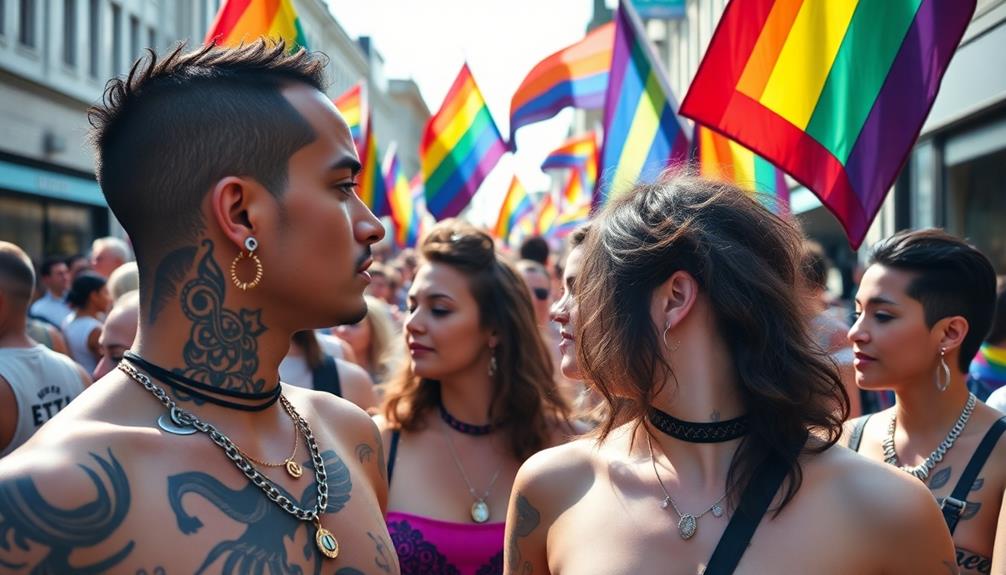
Today's LGBTQ+ culture embraces body piercings as a vibrant form of self-expression and identity affirmation. In this modern landscape, piercings have evolved into more than just body modifications; they're powerful statements about who you are. For nonbinary and gender nonconforming individuals, each piercing can carry significant meaning, reflecting personal journeys and identities.
Here are three key perspectives shaping contemporary piercing culture:
- Inclusivity: The rise of body positivity movements has shifted perceptions, encouraging acceptance of diverse body modifications. Everyone deserves to feel confident in their skin.
- Community Connection: Social media serves as a platform for sharing piercing styles and experiences, fostering supportive communities where you can connect with others who share your journey.
- Innovation: Advancements in piercing techniques and materials allow you to personalize your body art, ensuring that each piece resonates with your unique identity and story.
Today, piercing studios are increasingly prioritizing safety and inclusivity, creating environments that celebrate marginalized identities.
This evolution reflects a broader acceptance of body modifications as valid expressions of individuality in the LGBTQ+ community.
Frequently Asked Questions
What Is the Cultural History of Body Piercing?
Body piercing has deep cultural roots, serving as a form of expression and identity in various societies. You'll find it linked to rites of passage, spiritual beliefs, and social status across different historical contexts.
What Does the Queer Piercing Mean?
Think of queer piercings as vibrant flags waving in a sea of conformity. They're not just adornments; they're bold statements of identity, self-expression, and defiance, empowering you to embrace who you truly are.
What Did Piercings Symbolize?
Piercings symbolize personal identity and self-expression, allowing you to challenge societal norms and showcase your individuality. They serve as powerful forms of non-verbal communication, connecting you deeply to your own body and community.
What Are the Body Modifications in the Queer Community?
In the queer community, body modifications like tattoos, piercings, and surgical procedures empower you to express your identity. They challenge societal norms, affirm your self-image, and create a unique narrative that reflects your personal journey.
Conclusion
In the tapestry of LGBTQ+ culture, body piercings weave threads of identity, expression, and resilience. They symbolize more than just aesthetic choices; they reflect a journey of self-discovery and empowerment. As you explore this vibrant history, remember that piercings can be a canvas for your individuality, a badge of honor in the face of adversity. Embracing these practices today not only honors the past but also shapes the future of queer expression, shimmering with potential and pride.

